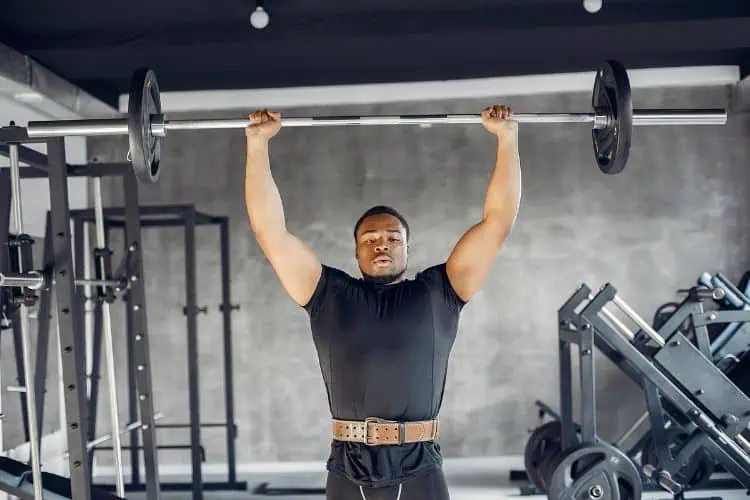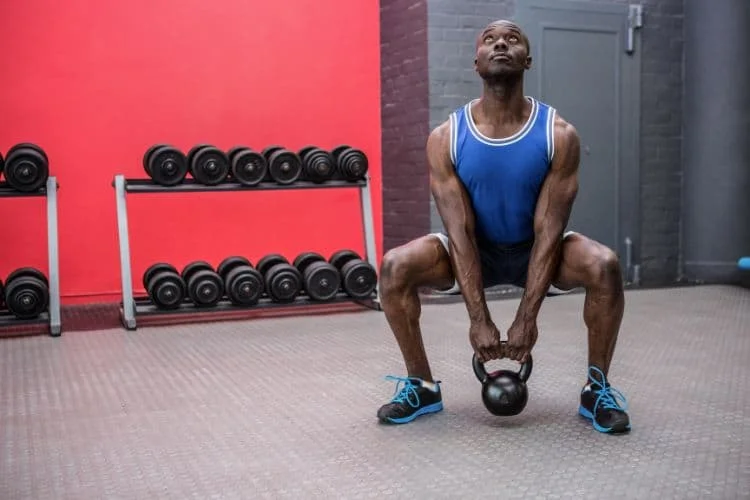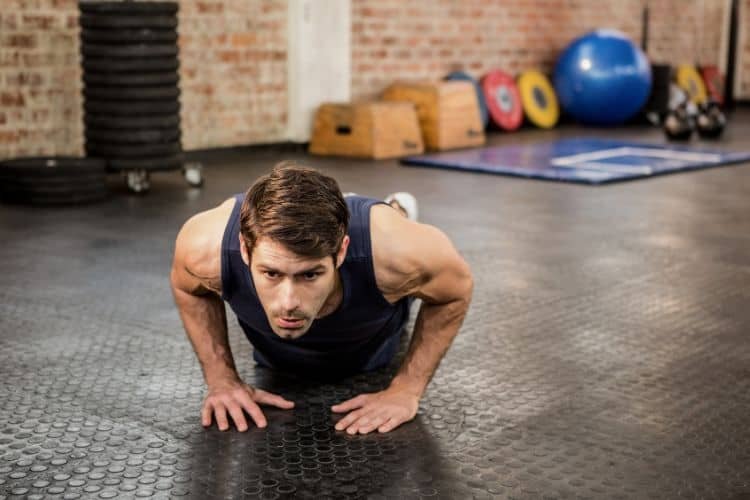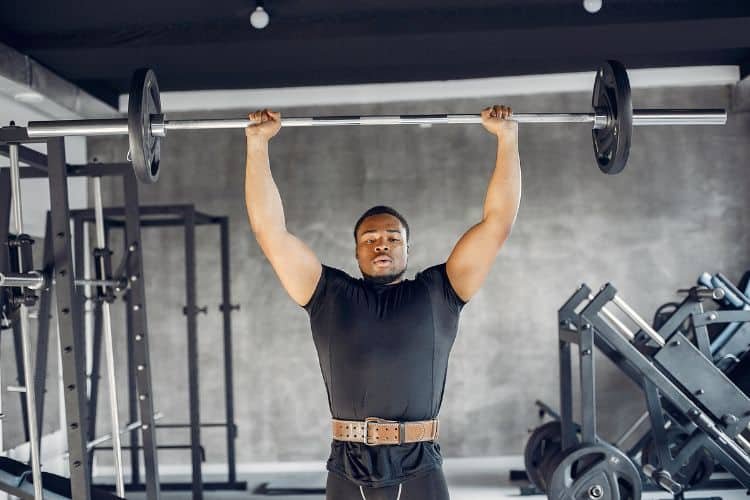
The overhead shoulder press is a quintessential strength-training exercise, revered for its ability to build powerful shoulders and enhance overall upper-body strength. This compound movement targets the deltoid muscles, while also engaging the triceps, traps, and core. Whether you’re a beginner or an advanced lifter, mastering the overhead press can significantly boost your performance in the gym and improve your posture, balance, and functionality in daily life. In this blog, we delve deep into the nuances of the overhead shoulder press, its variations, benefits, and a workout plan to incorporate into your fitness regimen.
Benefits of the Overhead Shoulder Press
1. Strengthens Shoulder Muscles
The overhead shoulder press primarily targets the deltoid muscles, particularly the anterior and lateral deltoids. Regular practice enhances shoulder strength and stability, essential for both athletic and everyday activities.
2. Builds Upper-Body Strength
Beyond the shoulders, this exercise recruits the triceps, trapezius, and upper chest. The synergy between these muscle groups improves overall upper-body strength, aiding in other compound lifts like bench presses and pull-ups.
3. Enhances Core Stability
Performing the overhead press requires a strong core to maintain balance and proper posture. The act of pressing weight overhead forces your core muscles to engage, fostering better stability and functional strength.
4. Improves Posture
In a world dominated by sedentary lifestyles, poor posture has become a common issue. The overhead press encourages an upright posture, counteracting the effects of slouching and helping to realign the spine.
5. Functional Strength
The pressing motion mirrors real-life activities, such as lifting objects overhead. Practicing this movement can translate to better performance in everyday tasks.
Proper Form and Technique
Setting Up
- Choose the Right Equipment: Use a barbell, dumbbells, or kettlebells depending on your preference and experience level.
- Grip and Stance: Stand with your feet shoulder-width apart. Grip the barbell slightly wider than shoulder-width, ensuring a firm hold.
- Starting Position: Position the barbell at shoulder height, with your elbows slightly forward and wrists straight. Engage your core and keep your back neutral.
Execution
- Pressing Movement: Push the weight upward in a straight line until your arms are fully extended. Avoid arching your back.
- Breathing: Exhale as you press the weight up and inhale as you lower it back to the starting position.
- Control: Lower the weight slowly and under control, maintaining tension in the shoulders and core throughout the movement.
Common Mistakes to Avoid
- Overarching the Back: This places undue stress on the lower back and can lead to injury. Engage your core to maintain a neutral spine.
- Flared Elbows: Keep your elbows slightly forward to reduce strain on the shoulder joints.
- Incomplete Range of Motion: Ensure the barbell travels the full range of motion for maximum muscle activation.
Variations of the Overhead Shoulder Press
1. Barbell Overhead Press
This classic variation is ideal for lifting heavy weights. It’s a staple in strength-training programs and works the shoulders, triceps, and upper chest effectively.
2. Dumbbell Shoulder Press
Using dumbbells allows for a greater range of motion and engages stabilizing muscles more effectively. It’s also gentler on the joints compared to a barbell press.
3. Arnold Press
This variation, popularized by Arnold Schwarzenegger, involves a rotation of the wrists during the press, targeting all three deltoid heads.
4. Seated Shoulder Press
Performing the press while seated minimizes the use of momentum and isolates the shoulder muscles. It’s a great option for beginners or those focusing on strict form.
5. Push Press
This explosive variation incorporates a slight dip and drive from the legs, allowing you to lift heavier weights. It’s ideal for building power and functional strength.
6. Single-Arm Dumbbell Press
This unilateral exercise corrects muscle imbalances and enhances core stability. It’s particularly effective for athletes and functional fitness enthusiasts.
Programming the Overhead Shoulder Press
Beginner Workout Plan
- Warm-Up: 5-10 minutes of light cardio and dynamic stretching.
- Barbell Overhead Press: 3 sets of 8-10 reps.
- Seated Dumbbell Press: 3 sets of 10-12 reps.
- Arnold Press: 2 sets of 12-15 reps.
- Accessory Work: Lateral raises and tricep dips (3 sets of 12-15 reps each).
- Cool-Down: Static stretching focusing on shoulders, chest, and triceps.
Intermediate Workout Plan
- Warm-Up: Include shoulder mobility drills and resistance band exercises.
- Barbell Push Press: 4 sets of 6-8 reps.
- Dumbbell Shoulder Press: 3 sets of 8-10 reps.
- Arnold Press: 3 sets of 10-12 reps.
- Accessory Work: Front raises, upright rows, and face pulls (3 sets of 12-15 reps each).
- Cool-Down: Foam rolling and static stretches.
Advanced Workout Plan
- Warm-Up: Emphasize joint preparation and dynamic stretches.
- Heavy Barbell Overhead Press: 5 sets of 4-6 reps.
- Single-Arm Dumbbell Press: 3 sets of 8-10 reps per arm.
- Push Press: 4 sets of 6-8 reps.
- Accessory Work: Heavy lateral raises, plate front raises, and overhead tricep extensions (3 sets of 10-12 reps each).
- Cool-Down: PNF stretching for shoulders and chest.
Tips for Progression
1. Gradual Overload
Progressively increase the weight or reps to ensure continuous improvement. Aim for small increments to prevent plateaus and reduce the risk of injury.
2. Prioritize Form
Always prioritize proper form over lifting heavier weights. Poor technique can lead to injuries and hinder progress.
3. Incorporate Variations
Rotate through different overhead press variations to target the shoulders from multiple angles and prevent monotony.
4. Rest and Recovery
Allow adequate recovery time between sessions to ensure optimal muscle repair and growth. Aim for 48-72 hours between shoulder workouts.
5. Nutrition
Support your training with a balanced diet rich in protein, healthy fats, and complex carbohydrates to fuel muscle growth and repair.
Common Questions About the Overhead Shoulder Press
Q1. Can I do the overhead press every day?
While the overhead press is an excellent exercise, performing it daily can lead to overtraining and hinder recovery. Aim for 2-3 sessions per week, depending on your fitness level and goals.
Q2. Is the overhead press safe for beginners?
Yes, the overhead press is safe for beginners when performed with proper form and appropriate weights. Start with lighter weights and focus on mastering the technique.
Q3. How does the overhead press compare to the bench press?
The overhead press primarily targets the shoulders and triceps, while the bench press emphasizes the chest, shoulders, and triceps. Both are valuable exercises for upper-body strength.
Q4. Can I do the overhead press with resistance bands?
Yes, resistance bands can be used for the overhead press, making it a great option for home workouts or when equipment is limited.
The overhead shoulder press is a cornerstone exercise for building strong, functional shoulders and enhancing overall upper-body strength. By incorporating its variations and adhering to proper form, you can achieve impressive gains and reduce the risk of injury. Whether you’re a beginner or an advanced lifter, make the overhead press a staple in your fitness routine to unlock your full potential. With consistency, progression, and dedication, the benefits of this exercise will undoubtedly elevate your training to new heights.













